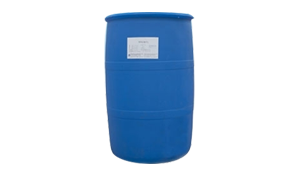Alkyl polyglycoside APG 0814 has a softening effect on the skin and no irritation to the eyes. It is widely used in personal care and household detergents, such as shampoo, bath liquid, facial cleanser, hand sanitizer, etc.

It has good solubility and compatibility in high concentration strong acid, strong alkali and electrolyte solutions. It can be used for industrial hard surface cleaning, refining agent with high temperature and strong alkali resistance for textile industry, foaming agent for petroleum development, etc; In the process of normal temperature storage, a small amount of solid precipitation or appearance turbidity is due to the influence of monoglycoside, magnesium oxide and high pH value. This turbidity has no negative impact on the performance of the product. The turbidity will disappear as the pH value is adjusted to 7-9. Apg0814 can also be specially processed into pH: 7-10.0 products according to the needs of customers.
The structure of dispersant is slightly different from that of wetting agent. The dispersant must be wetted and anchored to the surface of solid (pigment) particles, but part of it must be. Form a link between particles and dispersion medium. In addition, the hydrophobic part (also known as the tail) must be long enough so that the chain extending from the surface of the pigment can produce effective steric hindrance around the particles. In solvent based coating system, the tail length of surfactant should be much longer than c18h37. The surfactant with good effect as wetting agent is not an effective dispersant because its chain length is too short.
In electrostatic spraying technology, the atomized coating particles obtain high voltage in the spray gun. Therefore, the coating particles are attracted by the grounded substrate. The utilization rate of the coating is high and the coverage quality of the substrate is also good. However, in solvent coatings, the resistance may be too high (> 10000m Ω vol -) due to the non polarity of the solvent. Therefore, the coverage rate of the coating on the substrate is very low. The solution to this problem is to add polar solvents, but a large amount of polar solvents may be necessary to achieve the required resistance. For example, to reduce the resistance of xylene (> 10000m Ω vol - ') to the required value (0.6m Ω Vo1 -'), up to 50% butanol must be added.